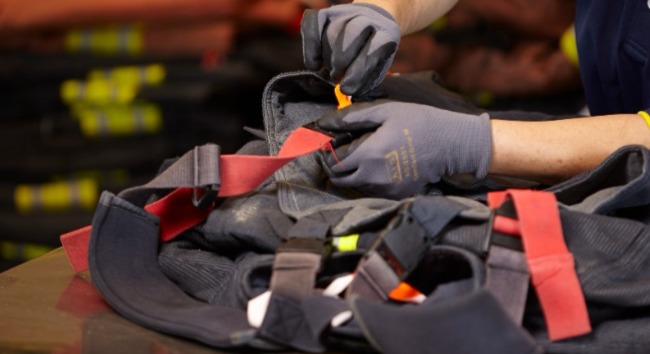Extending the Service Life of Firefighting Suit

Extending the Service Life of Firefighting Suit
According to NFPA recommendations, firefighting suit should be sent back to the "Module D" certified manufacturer at least twice a year for "inspection," "advanced decontamination," "cleaning, and repair." This should be evaluated by professional technicians to determine whether repairs are needed or if the suit should be recommended for disposal.
A comprehensive method is to improve the durability of the suit. Taking SUPER ARMOR as an example, the fabric weave of the outer layer is improved to make its strength more than three times higher than the EN standard requirements. The purpose is to increase strength and durability, preventing the surface of the suit from being easily torn by foreign objects or damaged by heat.
Colleagues should check their suit for any abnormalities before and after each use. If any issues are found, they should be reported for repair immediately. MORE
Disaster sites are filled with harmful substances (such as carcinogens and oil stains) that adhere to the gear. Proper cleaning not only effectively removes dirt but also reduces the risk of cancer. Oil stains that are not visible to the naked eye, if not thoroughly cleaned, may pose a danger when exposed to high temperatures again during future use. MORE
After washing, firefighting suit should be air-dried in a shady area or properly dried using a clothes dryer. Do not expose the gear to UV light for long periods continuously. MORE


